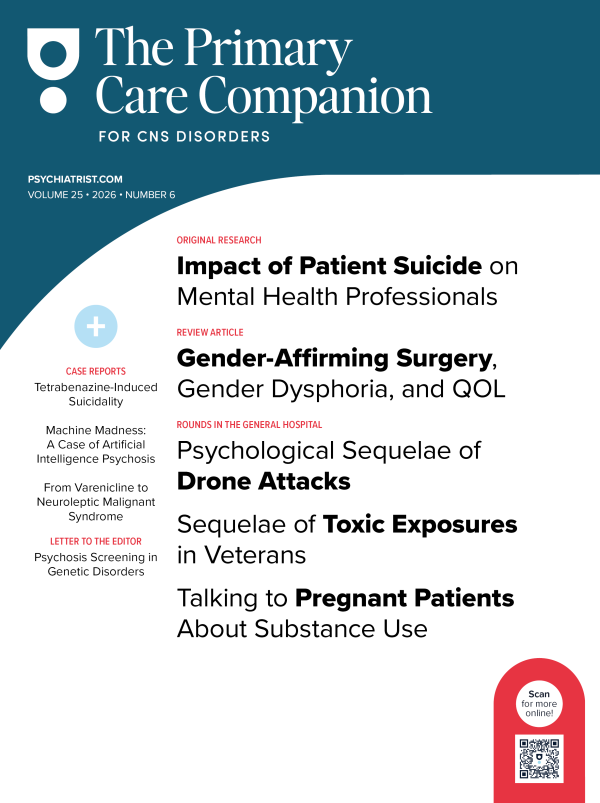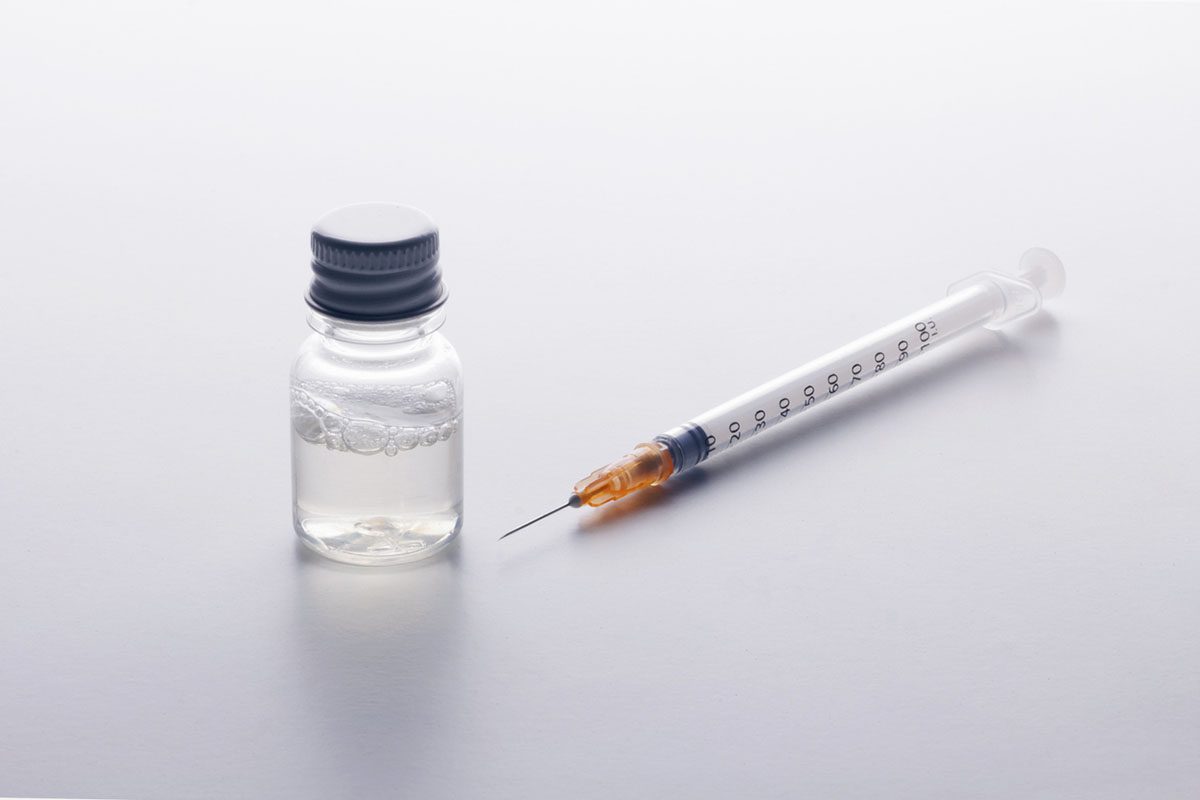Dependence on Supratherapeutic Doses of Modafinil: A Case Report
To the Editor: Modafinil is a wakefulness-promoting agent used for the treatment of various sleep disorders like narcolepsy, obstructive sleep apnea, and shift work sleep disorder. Over the years it has gained popularity among prescribers due to its wakefulness-promoting efficacy and presumably lower abuse potential and has been used in the treatment of various fatigue syndromes, treatment-resistant depression, and attention-deficit/hyperactivity disorder.1,2
There is a controversy with regard to the abuse potential of modafinil, with some authors suggesting that it has low abuse potential and others suggesting that it has psychoactive and euphoric effects and leads to alterations in mood, perception, thinking, and feelings, all of which are seen with other central nervous system stimulants.1,2 The data with regard to its use in toxic doses are also limited.3-6
In our search, we could find no report of modafinil abuse or dependence in the literature. We report a case of a patient who used modafinil in supratherapeutic doses in a pattern that conformed with drug dependence.
Case report. Mr A, a 53-year-old man diagnosed with schizoaffective disorder (DSM-IV criteria) for the last 33 years along with tobacco and benzodiazepine dependence syndrome (currently abstaining), presented with a history of excessive use of modafinil.
Exploration of his history revealed that, 3 years prior, he consulted a psychiatrist for symptoms of fluctuating sadness of mood, lethargy, and sedation and was started on tablet modafinil, 50 mg/d, which was later increased to 100 mg/d along with tablet sertraline, 50-100 mg/d, and tablet amisulpride, 100 mg/d. The addition of modafinil made the patient feel fresh and active, and after 4-5 months modafinil was increased to 200 mg/d at the request of the patient. Over the next year, he started self-medicating with modafinil, taking 1 or 2 tablets (100-200 mg) in the afternoon or evening to overcome his boredom and fatigue, having felt a strong desire to take the same. On days when he would not take modafinil, he had strong craving and urge to do so, felt that something was missing in his life, and became irritable, felt weak, and had difficulty in concentrating on the work at hand. Over the next year, his intake of modafinil increased to 1,500-2,000 mg/d in order to experience the desired effect; he consumed 100-200 mg every 1-4 hours. Later, due to heavy doses of modafinil, he would have slurring of speech and poor attention and concentration. He continued to take modafinil against the advice of family and treating psychiatrists and would indulge in doctor shopping if he had difficulty in getting a prescription for modafinil or procuring it.
With the available information, an additional diagnosis of modafinil dependence syndrome (per DSM-IV criteria for substance dependence disorder) was considered. He was counseled to taper off the dose of modafinil and was given benzodiazepines to manage the symptoms of withdrawal.
The usual recommended dosage of modafinil is 200 mg/d. The previous reports of the use of modafinil in supratherapeutic or toxic doses did not describe continuous intake of the higher doses over the period.3-6 In the case reported here, the patient took 1,500-2,000 mg of modafinil per day for about 1 year. The intake of modafinil followed the typical pattern of drug dependence, which indicates its abuse potential.
To conclude, our case suggests that modafinil has abuse potential and hence it should be prescribed cautiously and clinicians should be aware of its abuse potential. There is a need for further systematic studies to evaluate its abuse and dependence potential.
References
1. Myrick H, Malcolm R, Taylor B, et al. Modafinil: preclinical, clinical, and post-marketing surveillance—a review of abuse liability issues. Ann Clin Psychiatry. 2004;16(2):101-109. PubMed doi:10.1080/10401230490453743
2. Volkow ND, Fowler JS, Logan J, et al. Effects of modafinil on dopamine and dopamine transporters in the male human brain: clinical implications. JAMA. 2009;301(11):1148-1154. PubMed doi:10.1001/jama.2009.351
3. Lackey GD, Alsop JA, Albertson TE. A 24 month retrospective study of adult modafinil ingestions. Clin Toxicol (Phila). 2007;45:641.
4. Lackey GD, Alsop JA, Sands TR, et al. A two year retrospective study of pediatric modafinil ingestions. Clin Toxicol (Phila). 2007;45:643.
5. Carstairs SD, Urquhart A, Hoffman J, et al. A retrospective review of supratherapeutic modafinil exposures. J Med Toxicol. 2010;6(3):307-310. PubMed doi:10.1007/s13181-010-0017-6
6. Spiller HA, Borys D, Griffith JR, et al. Toxicity from modafinil ingestion. Clin Toxicol (Phila). 2009;47(2):153-156. PubMed doi:10.1080/15563650802175595
Author affiliations: Department of Psychiatry, Postgraduate Institute of Medical Education & Research, Chandigarh, India.
Potential conflicts of interest: None reported.
Funding/support: None reported.
Published online: October 18, 2012.
Prim Care Companion CNS Disord 2012;14(5):doi:10.4088/PCC.11l01333
© Copyright 2012 Physicians Postgraduate Press, Inc.





